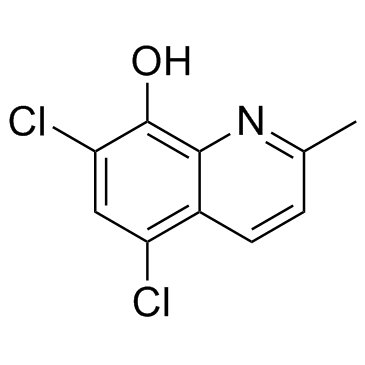Therapeutic use of topical corticosteroids in the vesiculobullous lesions of incontinentia pigmenti.
T I Kaya, U Tursen, G Ikizoglu
Index: Clin. Exp. Dermatol. 34(8) , e611-3, (2009)
Full Text: HTML
Abstract
Incontinentia pigmenti (IP) is a rare genodermatosis caused by a mutation of nuclear factor kappa B essential modulator gene. There is no specific treatment for IP, therefore it has been claimed that there is no effective treatment to hasten resolution of any of the phases of IP. However, the initial vesiculobullous stage of IP is characterized histopathologically by eosinophilic inflammation, which is expected to respond to corticosteroids. An 18-day-old female neonate was seen, with vesicles on her trunk and limbs diagnosed as the vesiculobullous stage of IP. The patient was treated with a double-compound cream containing a potent corticosteroid (difluocortolone valerate 0.1%) and an antiseptic (chlorquinaldol 1%), to be applied to the lesions twice daily. Five days later, resolution of the lesions was almost complete. As chlorquinaldol has no known anti-inflammatory activity, we attribute this improvement to difluocortolone valerate. This case shows that early lesions of IP with eosinophilic inflammation are treatable.
Related Compounds
| Structure | Name/CAS No. | Molecular Formula | Articles |
|---|---|---|---|
 |
chlorquinaldol
CAS:72-80-0 |
C10H7Cl2NO |
|
Purity determination of gynalgin bactericidal tablets with H...
2013-01-01 [Acta Pol. Pharm. 70(1) , 51-8, (2013)] |
|
[Allergies to 8-hydroxyquinoline derivatives].
1988-01-01 [Derm. Beruf Umwelt. 36(3) , 86-90, (1988)] |
|
In vitro activities of cloxyquin (5-chloroquinolin-8-ol) aga...
2007-03-01 [Antimicrob. Agents Chemother. 51 , 1105-6, (2007)] |
|
Fluorimetric determination of chloroxine using manual and fl...
1996-08-01 [J. Pharm. Biomed. Anal. 14(11) , 1505-11, (1996)] |
|
Sensitivity to clioquinol and chlorquinaldol in the quinolin...
1993-09-01 [Contact Dermatitis 29(3) , 163, (1993)] |